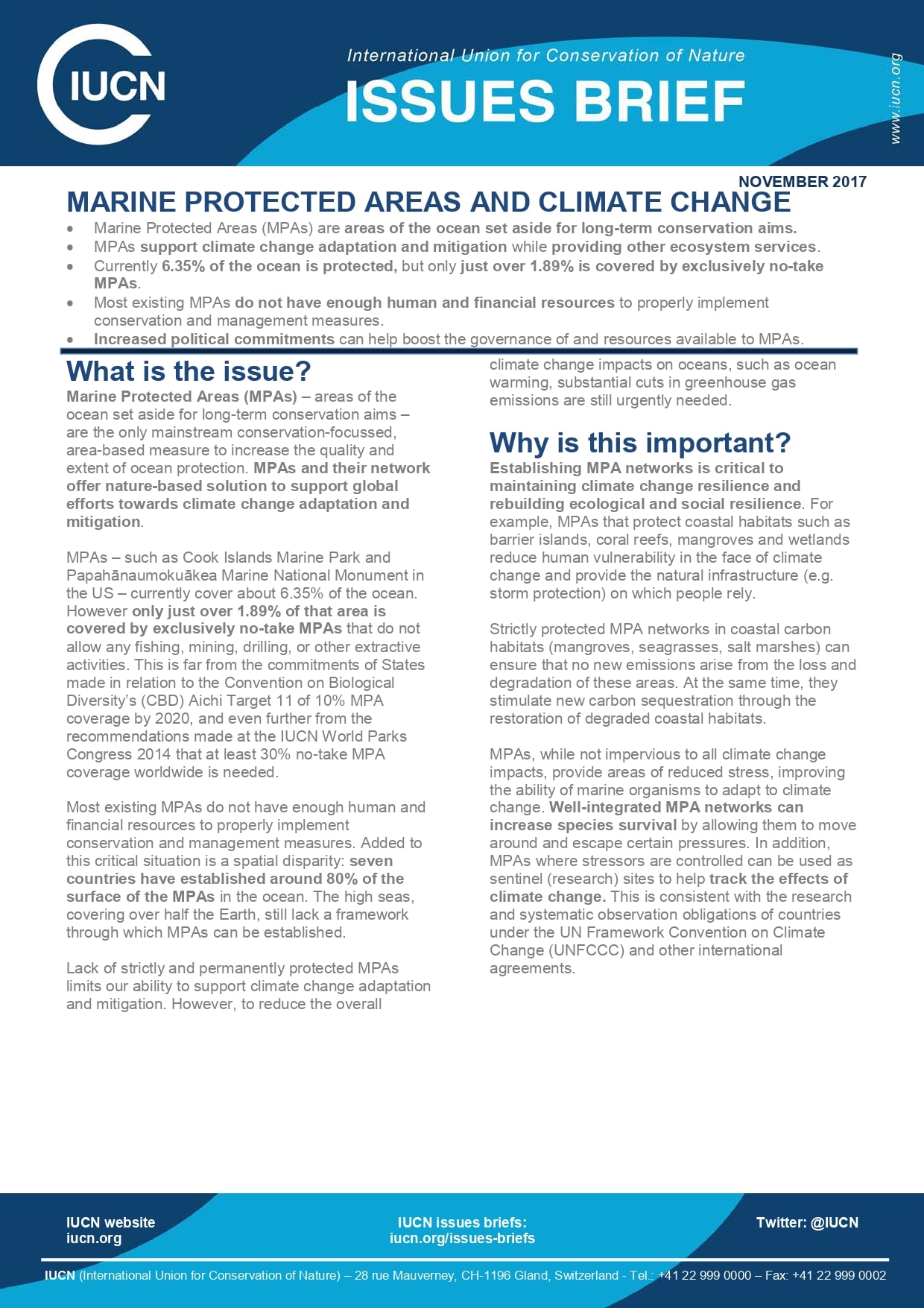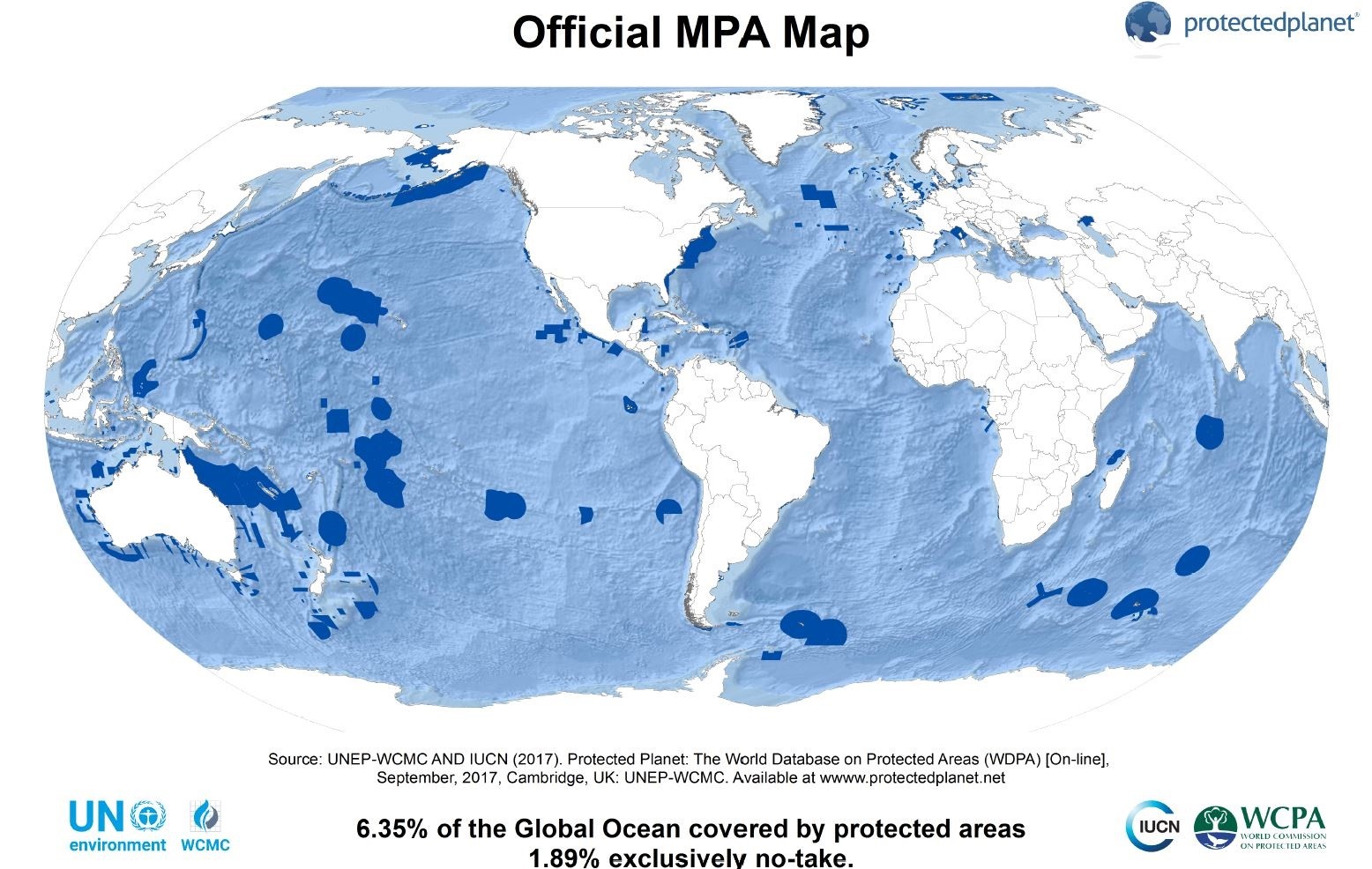What is the issue?
Marine Protected Areas (MPAs) – areas of the ocean set aside for long-term conservation aims – are the only mainstream conservation-focussed, area-based measure to increase the quality and extent of ocean protection. MPAs and their network offer nature-based solution to support global efforts towards climate change adaptation and mitigation.
MPAs – such as Cook Islands Marine Park and Papahānaumokuākea Marine National Monument in the US – currently cover about 6.35% of the ocean. However only just over 1.89% of that area is covered by exclusively no-take MPAs that do not allow any fishing, mining, drilling, or other extractive activities. This is far from the commitments of States made in relation to the Convention on Biological Diversity’s (CBD) Aichi Target 11 of 10% MPA coverage by 2020, and even further from the recommendations made at the IUCN World Parks Congress 2014 that at least 30% no-take MPA coverage worldwide is needed.
Most existing MPAs do not have enough human and financial resources to properly implement conservation and management measures. Added to this critical situation is a spatial disparity: seven countries have established around 80% of the surface of the MPAs in the ocean. The high seas, covering over half the Earth, still lack a framework through which MPAs can be established.
Lack of strictly and permanently protected MPAs limits our ability to support climate change adaptation and mitigation. However, to reduce the overall climate change impacts on oceans, such as ocean warming, substantial cuts in greenhouse gas emissions are still urgently needed.



